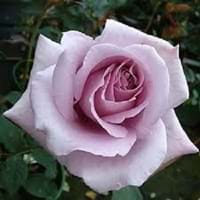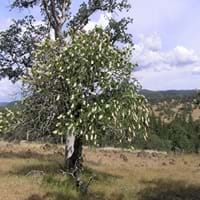Life Span
Perennial
Perennial
Origin
Hybrid origin
California
Types
Crystal Imperial , Double Delight , Elina , Precious Platinum
Not Available
Number of Varieties
Not Available
Habitat
All sorts of environments
Hillside
USDA Hardiness Zone
6-9
7-9
Sunset Zone
4, 5, 6, 7, 8, 9, 10, 11, 12, 13, 14, 15, 16, 17, 18, 19, 20, 21, 22, 23, 24
3a, 3b, 4, 5, 6, 7, 8, 9, 10, 14, 15, 16, 17, 18, 19, 20, 21, 22, 23, 24
Habit
Upright/Erect
Oval or Rounded
Flower Color
Baby Pink, Black, Blue, Blue Violet, Creamy Yellow, Dark Blue, Deep Pink, Deep Red, Lavender, Light Yellow, Lilac, Not Available, Pale White, Pale Yellow, Purple, Red
White, Pink
Flower Color Modifier
Multi-Color
Bicolor
Fruit Color
Non Fruiting Plant
Yellow Brown
Leaf Color in Spring
Not Available
Light Green
Leaf Color in Summer
Not Available
Green
Leaf Color in Fall
Not Available
Not Available
Leaf Color in Winter
Light Green
Not Available
Plant Season
Summer, Fall
Spring, Summer, Fall, Winter
Sunlight
Full Sun, Partial Sun
Full Sun, Partial Sun
Growth Rate
Medium
Medium
Type of Soil
Loam, Sand
Clay, Loam, Sand
The pH of Soil
Acidic, Neutral
Acidic, Neutral
Soil Drainage
Well drained
Well drained
Bloom Time
Summer, Late Summer, Early Fall, Fall, Late Fall
Late Spring, Early Summer
Tolerances
Drought
Drought, Salt
Where to Plant?
Ground, Pot
Ground
How to Plant?
Cuttings, Grafting
Seedlings
Plant Maintenance
Medium
Medium
Watering Requirements
Do not water the foliage, Water during dry weather
Keep the ground moist but not water-logged, Requires regular watering, Requires watering in the growing season
In Summer
Lots of watering
Lots of watering
In Spring
Moderate
Moderate
In Winter
Average Water
Average Water
Soil pH
Acidic, Neutral
Acidic, Neutral
Soil Type
Loam, Sand
Clay, Loam, Sand
Soil Drainage Capacity
Well drained
Well drained
Sun Exposure
Full Sun, Partial Sun
Full Sun, Partial Sun
Pruning
Prune in the late winter or spring, Remove damaged leaves, Remove dead branches, Remove dead leaves
Remove damaged leaves, Remove dead leaves, Remove dead or diseased plant parts
Fertilizers
10-10-10, All-Purpose Liquid Fertilizer
All-Purpose Liquid Fertilizer
Pests and Diseases
Aphids, dieback, Leaf rust, Powdery mildew, rose leaf-rolling sawfly
Red blotch
Plant Tolerance
Drought
Drought
Flower Petal Number
Not Available
Not Available
Foliage Texture
Coarse
Medium
Foliage Sheen
Matte
Glossy
Attracts
Bees, Butterflies, Hummingbirds, Not Available, pollinators
Birds, Butterflies
Allergy
Pollen
Not Available
Aesthetic Uses
along a porch, deck or patio, Beautification, Bouquets, Cottage Garden, Ornamental use, Showy Purposes, Wild gardens
Beautification, Landscape Designing, Showy Purposes
Beauty Benefits
Not Available
Not Available
Environmental Uses
Air purification
Air purification
Medicinal Uses
Vitamin C
Not Available
Part of Plant Used
stalk
Fruits
Other Uses
Beneficial species for attracting pollinators, Edible syrup, Making Shampoo, Oil is used for aromatherapy, Oil is used in perfume, soaps, creams, etc., Use in Chinese herbology, Used as Ornamental plant
Decoration Purposes, Showy Purposes, Used as Ornamental plant
Used As Indoor Plant
No
No
Used As Outdoor Plant
Yes
Yes
Garden Design
Cutflower, Feature Plant, Foundation, Mixed Border, Topiary / Bonsai / Espalier
Dried Flower, Everlasting, Feature Plant, Hedges, Mixed Border, Screening, Wind Break
Botanical Name
ROSA 'Americana'
AESCULUS californica
Common Name
Americana Hybrid Tea Rose, Hybrid Tea Rose
California Buckeye
In Hindi
संकर चाय गुलाब
कैलिफोर्निया Buckeye
In German
Teehybride
California Buckeye
In French
Hybride de thé
California Buckeye
In Spanish
Híbrido de té
California Buckeye
In Greek
Hybrid tea rose
Καλιφόρνια Buckeye
In Portuguese
Hybrid tea rose
California Buckeye
In Polish
Hybrid tea rose
Kalifornia Buckeye
In Latin
Hybrid tea rose
California Buckeye
Phylum
Magnoliophyta
Magnoliophyta
Class
Magnoliopsida
Magnoliopsida
Family
Rosaceae
Sapindaceae
Clade
Angiosperms, Eudicots, Rosids
Angiosperms, Eudicots, Rosids
Tribe
Not Available
Not Available
Subfamily
Rosoideae
Hippocastanoideae
Number of Species
Not Available
Importance of Hybrid Tea Rose and California Buckeye
Want to have the most appropriate plant for your garden? You might want to know the importance of Hybrid Tea Rose and California Buckeye. Basically, these two plants vary in many aspects. Compare Hybrid Tea Rose and California Buckeye as they differ in many characteristics such as their life, care, benefits, facts, etc. Every gardener must at least have the slightest clue about the plants he wants to plant in his garden. Compare their benefits, which differ in many ways like facts and uses. The medicinal use of Hybrid Tea Rose is Vitamin C whereas of California Buckeye is Not Available. Hybrid Tea Rose has beauty benefits as follows: Not Available while California Buckeye has beauty benefits as follows: Not Available.
Compare Facts of Hybrid Tea Rose vs California Buckeye
How to choose the best garden plant for your garden depending upon its facts? Here garden plant comparison will help you to solve this query. Compare the facts of Hybrid Tea Rose vs California Buckeye and know which one to choose. As garden plants have benefits and other uses, allergy is also a major drawback of plants for some people. Allergic reactions of Hybrid Tea Rose are Pollen whereas of California Buckeye have Not Available respectively. Having a fruit bearing plant in your garden can be a plus point of your garden. Hybrid Tea Rose has no showy fruits and California Buckeye has showy fruits. Also Hybrid Tea Rose is not flowering and California Buckeye is not flowering . You can compare Hybrid Tea Rose and California Buckeye facts and facts of other plants too.





